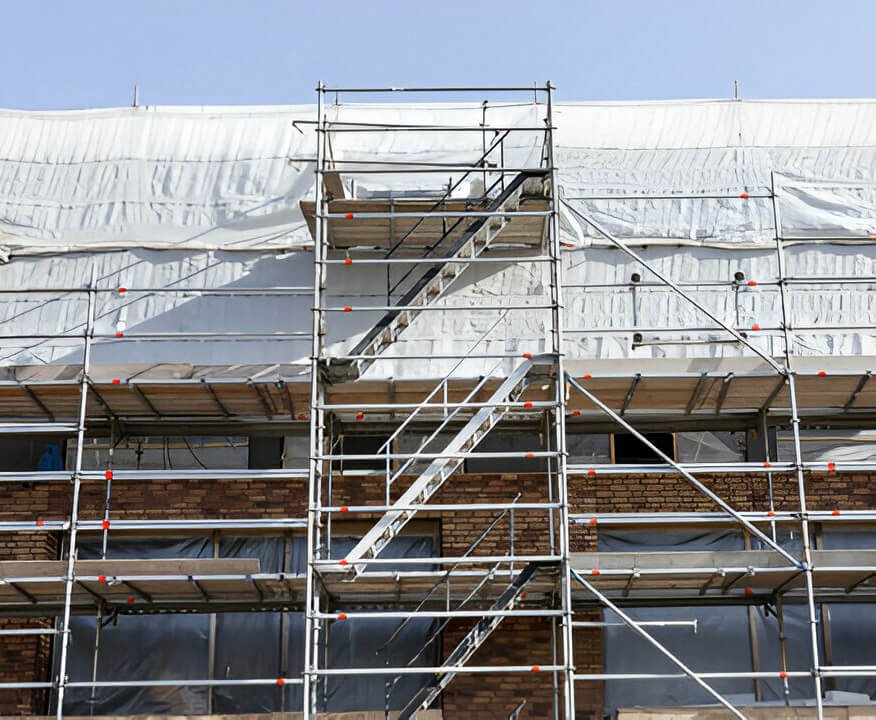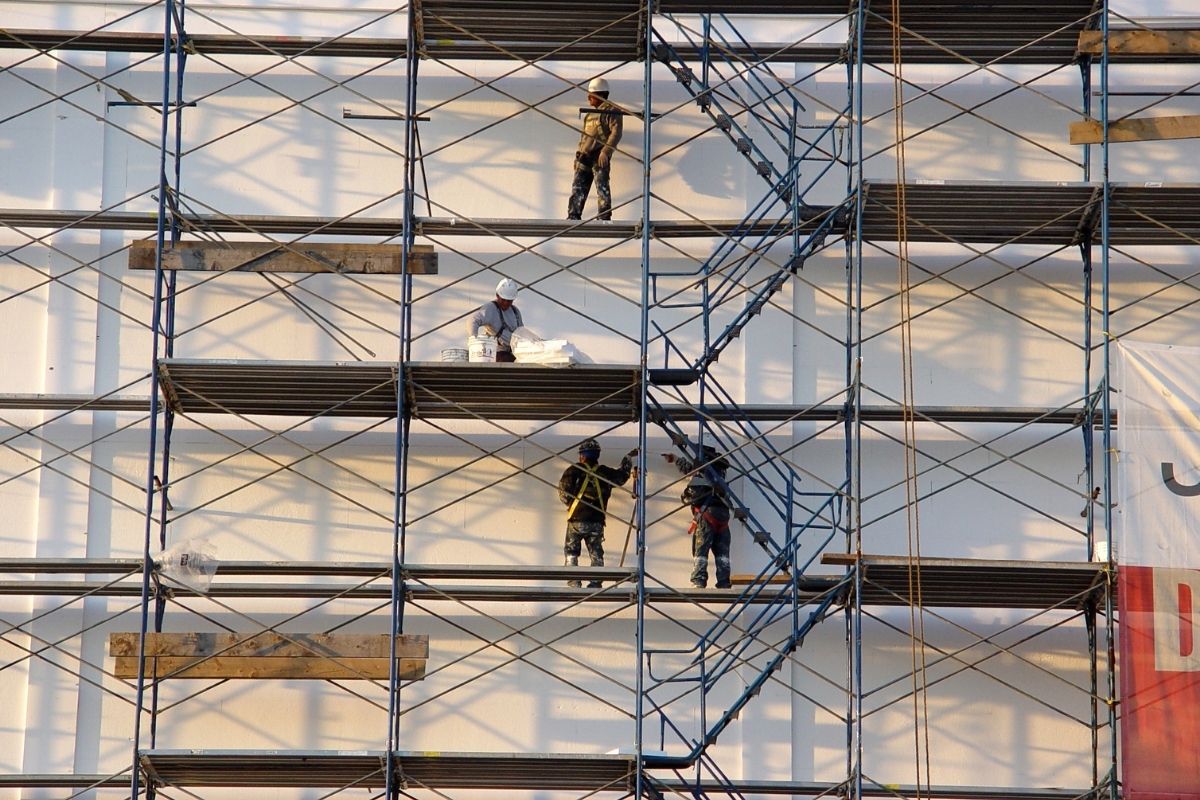Quality Scaffolding Surrey for Both Residential and Commercial Projects
Quality Scaffolding Surrey for Both Residential and Commercial Projects
Blog Article
Exploring the Numerous Kinds Of Scaffolding Utilized in Building And Construction Jobs
The building market relies greatly on different types of scaffolding to meet details project needs, each offering distinct advantages and applications. Conventional frame scaffolding gives a strong structure for basic tasks, while put on hold scaffolding is necessary for work on high-rise frameworks.

Standard Structure Scaffolding
Standard structure scaffolding is just one of the most commonly utilized approaches in the construction industry due to its robustness and flexibility. This system is composed of horizontal and upright frames that are assembled to develop a secure system for materials and workers. The main components consist of upright messages, horizontal ledgers, and diagonal dental braces, which with each other give a solid structure that can sustain considerable lots.
One of the crucial advantages of standard frame scaffolding is its adaptability to different construction tasks, varying from domestic structures to large industrial frameworks. The modular design permits for simple setting up and disassembly, making it efficient for both long-lasting and temporary projects. Furthermore, the system can be customized in height and size, fitting different building styles and website conditions.
Safety and security is critical in scaffolding applications, and typical frame systems are furnished with guardrails and toe boards to prevent falls and make certain employee protection. In addition, regular evaluations and adherence to safety and security regulations are critical in maintaining the integrity of the scaffold. Overall, traditional framework scaffolding remains an essential choice in the construction industry, providing a trusted platform for labor and improving total task efficiency

Suspended Scaffolding
Put on hold scaffolding offers an unique remedy for building tasks that call for accessibility to elevated surface areas, particularly in situations where traditional structure scaffolding may be unwise. This kind of scaffolding is normally suspended from the roof covering or upper levels of a framework, utilizing a system of platforms, wheels, and ropes to produce a functioning area that can be gotten used to numerous heights.
Among the primary benefits of suspended scaffolding is its versatility. It can be easily rearranged or lowered to fit adjustments in building and construction requirements, making it optimal for tasks such as window installment, façade work, and upkeep on high-rise structures. Additionally, the very little impact of put on hold scaffolding enables far better use ground room in city settings, where space is often limited.
Safety and security is an essential factor to consider in the usage of suspended scaffolding. In general, suspended scaffolding offers a reliable and effective option for accessing hard-to-reach locations in different building and construction situations, boosting both performance and security on site.
System Scaffolding
System scaffolding, usually considered as a contemporary option in the scaffolding sector, consists of pre-engineered components that can be rapidly set up and adapted for different building projects. Scaffolding. This type of scaffolding is identified by its modular style, which enables versatility best site and efficiency on work websites, fitting structural needs and different heights
Commonly made from high-strength steel or light weight aluminum, system scaffolding uses enhanced resilience and stability. The parts consist of vertical articles, horizontal ledgers, and diagonal dental braces, which interconnect safely, ensuring a robust structure. The style usually includes standard fittings, streamlining setting up and disassembly processes, therefore lowering labor time and costs.

Rolling Scaffolding
Rolling scaffolding is a versatile alternative to conventional set scaffolding, made for flexibility and convenience of usage on building websites. This kind of scaffolding includes a system sustained by structures with wheels, enabling workers to quickly move it as needed. The mobility feature significantly enhances productivity, as it decreases downtime linked with taking apart and assembling fixed scaffolding.
Generally created from light-weight materials such as aluminum or steel, rolling scaffolding supplies a sturdy yet portable remedy for jobs requiring constant repositioning - Scaffolding. It is specifically advantageous in jobs such as painting, drywall setup, and electrical job, where accessibility to various elevations and areas is essential
Security is critical in rolling scaffolding layout, with features such as securing wheels to stop unintended activity when in operation, and guardrails to secure workers from drops. Furthermore, several designs are adjustable in elevation, accommodating different task needs.
Cantilever Scaffolding

The style of cantilever scaffolding normally includes utilizing arms or brackets anchored to a structure or framework, allowing the platform to prolong outside safely. Safety and security is extremely important; thus, these scaffolds should be crafted to stand up to ecological conditions and various tons. Routine evaluation and maintenance are vital to make certain architectural honesty and employee safety.
Cantilever scaffolding is preferred for its convenience and efficient use space, making it a preferred option in metropolitan atmospheres where room restraints are usual. It facilitates less complicated access to high altitudes, inevitably contributing to the total efficiency of building and construction jobs. Just like all scaffolding kinds, proper training and adherence page to safety and security standards are vital for employees making use of cantilever scaffolding.
Conclusion
Traditional framework scaffolding supplies stability, while suspended scaffolding provides convenience for raised jobs. System scaffolding promotes fast assembly, and rolling scaffolding improves wheelchair for differing job atmospheres.
Conventional structure scaffolding gives a tough structure for basic tasks, while suspended scaffolding is vital for work on high-rise structures.Rolling scaffolding is a functional alternative to standard set scaffolding, created for movement and simplicity of use on construction sites. As with all scaffolding types, correct training and adherence to safety and security requirements are critical for workers utilizing cantilever scaffolding.
Typical structure scaffolding supplies stability, while suspended scaffolding supplies convenience for elevated jobs. System scaffolding helps with quick setting up, and rolling scaffolding improves movement for varying work environments.
Report this page